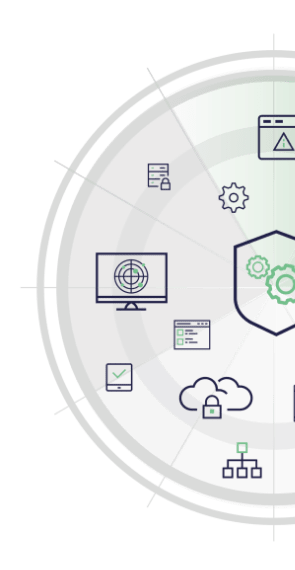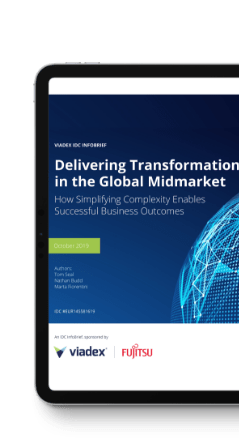Money-making machines

by
Gerhard Malan, CFO, Viadex
Legacy IT can fund growth, even if it can’t drive it
It’s all too easy to do the wrong sums when trying to update your IT infrastructure in the right way. Many businesses have a tendency to cling to the ROI of ageing infrastructure to squeeze the very last drop of ‘R’ out of it. The question is not whether you can afford to streamline your IT; but whether you can afford not to.
The four pillars of operational agility
It’s important for any business to be able to move fast and respond to opportunities as they arise. Operational agility is supported by four pillars, and the more of them you have in place, the better condition your business is in, to pivot, flex, and adapt as opportunities are identified; not just moving with the times, but moving ahead of them. Ultimately, keeping ahead is about getting to customers before, or better than, your competitors do. The four pillars are:
- Best people: Having talented people on your team, and looking after them, not just remuneratively but in the encouragement, training and motivation you offer them. Value is a reciprocal quality. The more you liberate your people to fulfil their potential, the more they commit to helping the business fulfil its potential.
- Latest technology: The enabler of potential is technology. Inherent to effective motivation is providing people with the tools and technologies to perform their roles with maximum effectiveness. Technology has become a factor in attracting talent. Top of the list when millennials are job-seeking, is how employers have understood and embraced technology. Smart people want to work for smart companies, not companies that lag behind the times, haven’t adopted collaborative tools, do not empower mobile working, and perhaps still retain a wariness of the cloud.
- Agile thinking: Innovators have an in-built inability to accept the status quo. They change things. They disrupt. This is why every company today is a technology company; it reaches its markets online, it accepts no boundaries, physical or intellectual, it embraces digitisation to increase productivity, it harnesses automation to accelerate speed to market and make life simpler for its customers, it leverages mobility to expand the capabilities of its workforce, and it puts customer-centricity at the heart of its operations, striving constantly to improve the customer experience.
- Clever financing: Having the funds to channel into capabilities and technologies that make the previous three pillars as firm as possible, requires looking at finance in just the same agile way that a forward-thinking company looks at business opportunities; starting with the assumption that nothing is impossible and then setting out to prove just how possible it can be.
How to build business for your competitors
In its definition of legacy systems, Techopedia says: “Legacy systems…may be associated with terminology or processes that are no longer applicable to current contexts or content, thus creating confusion. In theory, it would be great to be able to have immediate access to use the most advanced technology. But in reality, most organizations have legacy systems – to some extent. A legacy system may be problematic, due to compatibility issues, obsoletion or lack of security support”.
That’s a catalogue of retrograde thinking and a whole can of problems ready to spill over and damage the business when you least expect it to (and even if you expect it to, how does that help?).
In a previous blog, ‘Stretching the global IT budget’, I suggested that the flexibility a business retains becomes greater in almost direct proportion to the cash it can safeguard, rather than having cash locked up in assets. Clever financing is about unlocking that cash.
Companies are often wary of taking on new technology and tools because they fear the risk, and suspect the business case, of fresh investment for capabilities they feel are already within the business, or could be with just a little tinkering here and then to make adjustments to legacy technology. They’re happy to paper over the cracks not just because doing so eliminates immediate risk, and risky decisions, but because it defers both the risk and the decision.
Meanwhile, somebody else (the competition) without such trepidation, jumps right in, and gets to the customer before they do, they interact in line with customer expectations in a digital age, and they grow. To put this in context, they grow usually as a result of having moved to the cloud.
What we keep in the attic
Legacy equipment can become a money-making machine, depending on the way in which it’s treated from an accounting perspective. I have known of companies who have deferred cloud migration for extremely long periods while they wait for the ROI of the existing system to mature almost to the point where it its ready for the retirement home. In such cases, the legacy equipment reaches obsolescence, but could still retain substantial value on a company’s books. The book value of existing assets, however, is usually greater than the fair market value if a company attempted to sell them once decommissioned.
This is understandably a difficult scenario for some businesses to contemplate. They find that the pain of the book loss exceeds the value of a cloud solution ROI. The result is, they make the wrong decision; they kick the cloud opportunity out to another day. They are happier to wait for that last smidgen of ‘R’ to come in against their ‘I’. This is a strategy as far from seizing the moment as it’s possible to be. It’s more about letting the moment marinade. While that happens there’s a big chance that someone with a sharper appetite will come in and wolf it down.
The power to change: Purchase lease back
There is a better way. Viadex work with Ingram Micro as a strategic partner to our tailored financial solutions; supporting Viadex in creating clever financing for any size company keen to grow. Ingram have worked with companies caught up in the legacy ROI trap to uncover the existing book value of their legacy assets and evaluate the strength of their credit.
This enables Ingram Micro, and Viadex, to structure a purchase lease back of legacy assets, corresponding to the depreciation schedule and remaining useful life running in parallel to a cloud migration plan. Immediate capital from the book value of the legacy assets can thus be made available to customers to fund a new cloud solution and the cost of migration.
Referring back to the four pillars of operational agility, while they’re mutually dependent – best people, latest technology, agile thinking, and clever financing, each one making the other three possible – you can’t escape the fundamental principle that money makes the world go round.
If you’re looking to make money from your machines, we’ll help you find the best way to do it. Get in touch anytime. Email us at marketing@viadex.com




